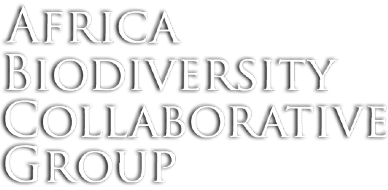Incompatible conversion of forests and woodlands to agriculture is one of the major drivers of deforestation, loss of habitat, biodiversity, ecosystem services and increase in CO2 emissions in Tanzania. The country’s economy is primarily agricultural based with more than 80% of the nations population engaged in agriculture. However, the agricultural sector is seen as the major opportunity for investment on the basis that arable land accounts for 44 million hectares out of which only 10.1 million hectares are currently under cultivation (Baha 2012). The National Kilimo Kwanza (Agriculture First) initiative launched in 2009 encourages the transformation of the agriculture sector in the country by taking advantage of the numerous opportunities to modernize and commercialize agriculture in Tanzania.
With increases in population size as well as increased interest by foreign and domestic companies in large-scale agricultural investments in Tanzania for export and related investments in bio-energy, the threat to biodiversity and ecosystem services drastically increase, as will CO2 emissions from agriculture conversions. Therefore there is an urgent need to better understand the geography and the ecological, social, economic and political factors driving land acquisitions and the conversion of natural lands to both subsistence and commercial agriculture, to mitigate the impacts on critical biodiversity and ecosystem services and to design landscapes that better work for people, agriculture and biodiversity.
In 2012 JGI completed research on large-scale land acquisitions in Masito-Ugalla Ecosystem in western Tanzania with a focus on modeling and mapping potential conflict between agriculture and biodiversity with special emphasis on chimpanzees as a keystone species for the region. JGI collaborated with Google Earth Outreach and Google Earth Engine teams to develop a cloud platform that enables for the first time to model species distribution in the cloud. This allowed to model and map chimpanzee distribution in Masito-Ugalla using petabytes (thousands of terabytes) of satellite imagery and other ancillary data stored in the Google cloud. In order to improve the likelihood of finding chimpanzee nests during the field surveys over the large and difficult to access remote areas, JGI tested the use of unmanned aerial vehicle (UAV), commonly known as drones.
The final conflict map was developed by overlaying the predicted potential land for agriculture and chimpanzee suitability layers with watershed, village boundaries, land tenure, protected areas, and distribution of other conservation targets in the region. In addition to chimpanzees, Greater Mahale Ecosystem Conservation Action Plan (2007) defined the following focal conservation targets: Rivers, streams and riparian habitats, Elephants, Montane ecosystems, Bamboo forest, Evergreen forest, and Miombo woodland/grassland mosaic. All these targets have been combined in one biodiversity index using normalized density and distance functions and overlaid with agriculture potential map.
This study is preliminary and focuses on developing and testing methodologies to model potential conflict between biodiversity and agriculture expansion at the regional scales using Masito-Ugalla Ecosystem as a case study. The methodology will be scaled up to the Greater Mahale Ecosystem in 2013. Only then Marxan optimization tools could be used to identify areas that best balance both agriculture and biodiversity objectives and identify potential safeguards (e.g. specific land use plans, spatial scenarios, or policies) for agriculture expansion. It is clear that agriculture is one of the major threats to biodiversity in the region that could potentially lead to the loss of more than 60% of critical chimpanzee habitats in Masito-Ugalla alone. Agriculture is the predominant economic sector in the area and over 85% of the total population of the Kigoma and Mpanda region depends on agriculture for their livelihoods. However, the bulk of agricultural production comes from smallholder farmers who employ very little capital.
Recently AgriSol Energy Tanzania and Serengeti Advisers Limited, a Tanzanian investment and consulting firm together with Iowa-based Summit Group and Global Agriculture Fund of the Pharos Financial Group, in partnership with AgriSol Energy LLC and the College of Agriculture and Life Sciences at Iowa State University have been planning to invest in agriculture in the land that is currently designated as refugee settlements in Katumba and Mishamo in Mpanda district and Lugufu in Kigoma rural district (Figure 2). In addition to soil fertility and suitability for agriculture, one of the main factors that led to the decision to invest capital in agriculture in former refugee areas was the lack of information on actual boundaries of the village and general lands (Baha 2012). This information was not available either at the national or local levels while former refugee settlements and camps were better demarcated.
Facilitating local communities and governments development of Participatory Village Land Use Plans has been consistently identified as one of the main conservation strategies at several Conservation Actions Plans (Greater Gombe, Greater Mahale, Masito-Ugalla, and National Tanzania Chimpanzee Conservation Action Plans). While clarifying land tenure is still an important conservation strategy that needs to be continued, the availability of information on land use boundaries could accelerate and increase land allocations to foreign and local investments similar to AgriSol and make it easier for land grabbing.
Therefore there is an urgent need to identify critical hotspots and priority areas for conservation of biodiversity and other ecosystem services supporting people livelihoods, including agriculture. Tanzania as a nation should take advantage of conserving its biodiversity and ecosystem services and make it an integral part of transforming its agriculture sector.
The modeling approach developed in the case study will be expanded as part of the 2013 work plan for the larger Greater Mahale Ecosystem. The final layers will be used as an input to spatial optimization tool Marxan for developing biodiversity safeguards for agricultural expansion in Tanzania.


Add a Comment